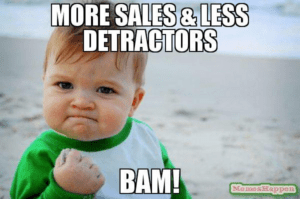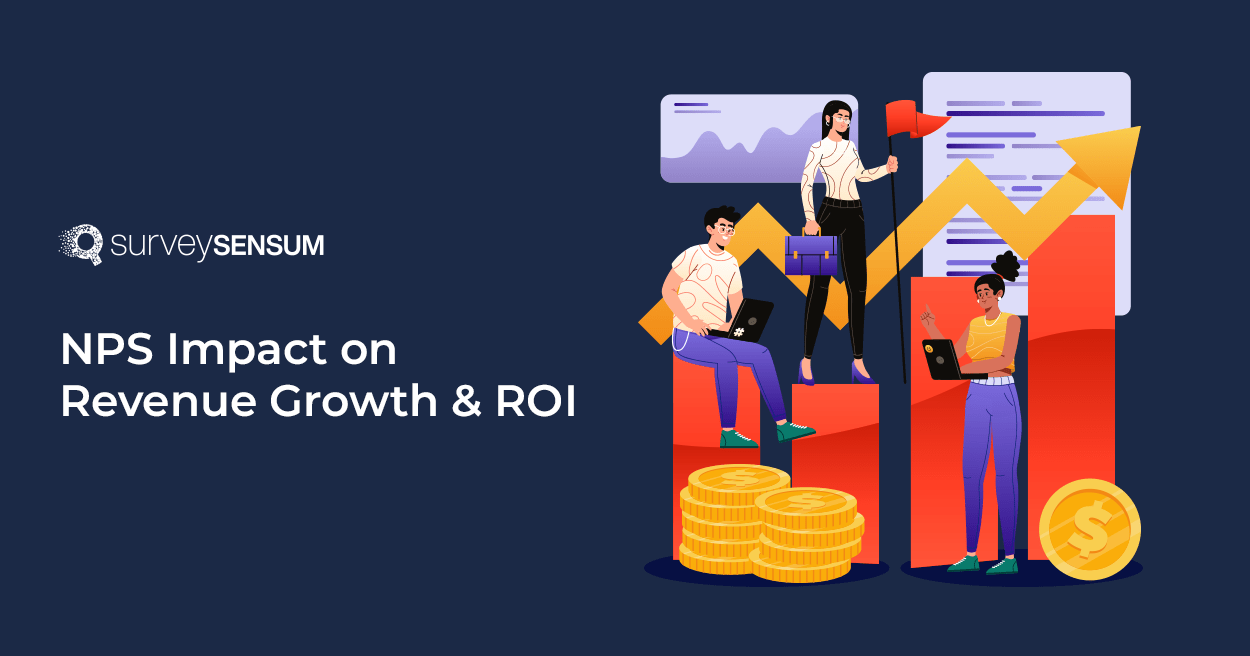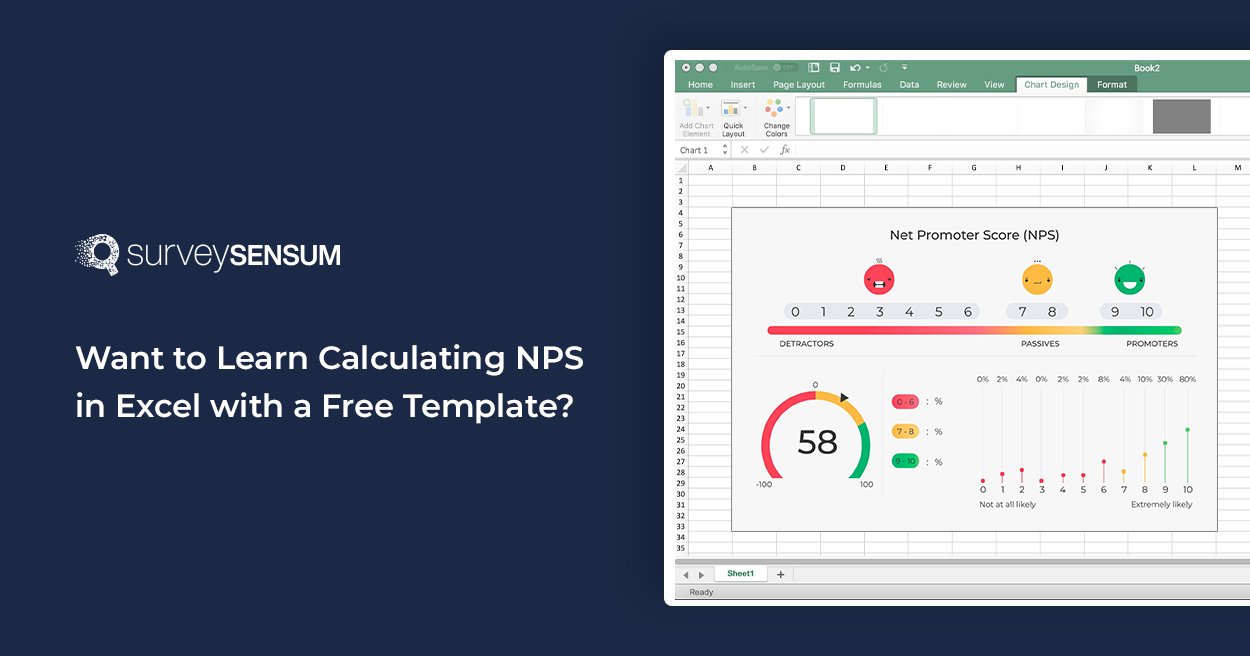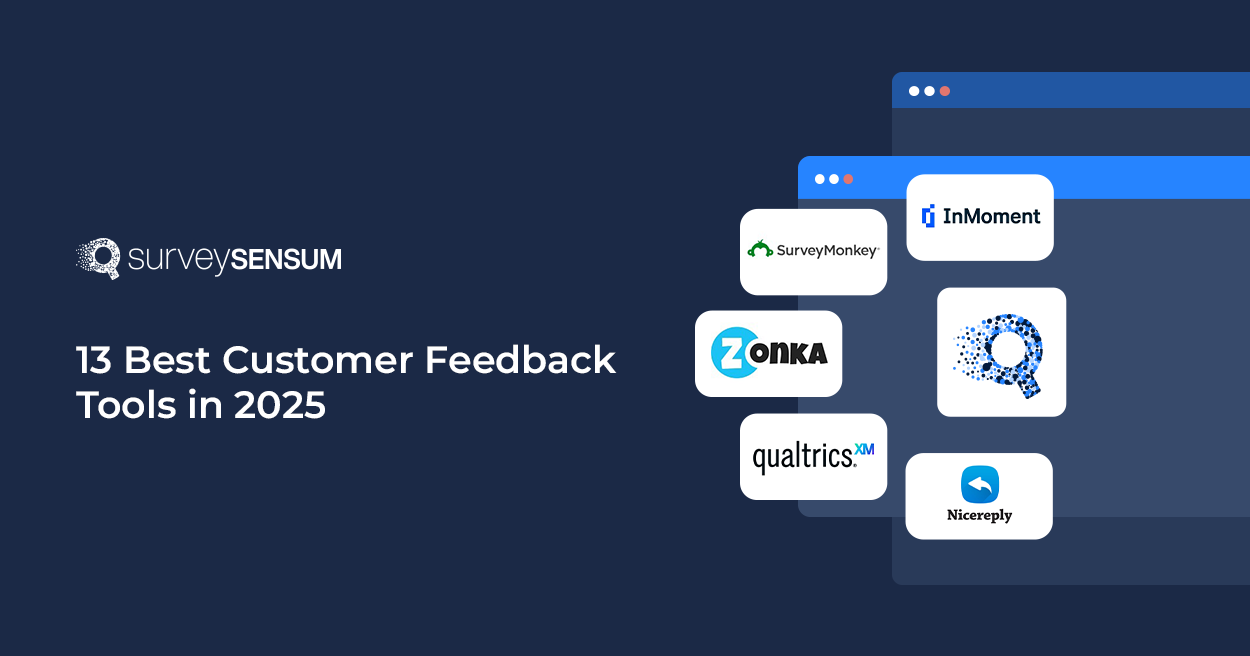
In 2006, Bain & Company conducted thorough research on Dell’s detractors and promoters. They found that on average, a consumer is valued at $210 to Dell. However, a detractor ends up costing the company $57, while a satisfied promoter generates $328 in value.
Now, according to Bain & Company, if Dell could turn only 2-8% of those unhappy customers into satisfied ones, they could have boosted their annual revenue by $167 million. This demonstrates that by reducing customer churn and enhancing overall customer retention and relationships, companies can save lost revenue and boost customer spending.
This small case study shows that when companies move beyond the traditional customer satisfaction metric and rigorously measure NPS, they can find ways to make customers happier, which, in turn, can lead to increased revenue.
NPS also helps companies identify areas where they might be making short-term gains at the expense of customer satisfaction, which could harm long-term profitability. And by focusing on improving NPS scores with efficient NPS software, businesses can prioritize strategies that lead to sustainable growth.
Yet most businesses struggle to move beyond measuring their NPS. In other words, they may have a high or low NPS score but do not fully understand the NPS revenue correlation or the NPS impact on revenue.
So, the question here is how NPS impacts revenue growth and how businesses can actually leverage NPS methodology’s to increase their revenue.
Does NPS Impact Revenue Growth? [NPS Revenue Correlation]
According to Bain & Company, in most industries, NPS Scores explain roughly 20% to 60% of the variation in organic growth rates among competitors. On average, an industry’s Net Promoter leader outgrew its competitors by a factor greater than two times.
In other words, a company’s NPS is a good indicator of its future growth. But the relationship is stronger in some industries than in others. This is why it is important to benchmark NPS scores against your competitors.
To understand this difference better, here’s a report on Net Promoter Benchmarks that provides detailed information on the NPS score of both B2B and B2C.

Source: Retently 2024 NPS Benchmarks for B2B & B2C
Now coming back to the topic of NPS impact on revenue. Here are some statistics to help you understand better.
- NPS correlation to revenue growth: In 2005, the London School of Economics conducted a study on customer advocacy as business growth. In the study, they found that an increase of the NPS score by 7 points equates to a 1% growth in revenue.
- NPS cuts cost of customer acquisition: According to the research done by Frederick Reichheld of Bain & Company (the inventor of NPS) increasing customer retention rates by 5% increases profits by 25% to 95%.
- NPS increases customer loyalty: According to the 2017 Temkin research, promoters are 4.2 times more likely to buy again, 5.6 times more likely to forgive a company after a mistake, and 7.2 times more likely to try a new offering compared with detractors.
- NPS gives competitive advantage: In the book, The Ultimate Question 2.0, Fred Reichheld and his team found that companies that have adopted NPS grow twice as fast as their competitors.
In the early 2000s, Apple, known for its niche products, embarked on a journey of transformation. It started placing heavy importance on NPS, with every new employee receiving comprehensive training, including a specific focus on NPS. Regular NPS assessments and internal competition between Apple stores fueled performance improvements.
Between 2007 and 2011, Apple’s NPS soared from 58% to an impressive 72%. The investment paid off handsomely, with Apple generating a remarkable $6,000 in revenue per square meter of store space, while competitors averaged only $1,200. Apple’s success highlights the potent impact of NPS in elevating customer satisfaction and driving business growth.
Now we know about the NPS revenue correlation. But the question remains – how can you leverage NPS to boost revenue for your business? Here are 4 ways to do that!
How NPS Can Help You Boost Revenue?
1. Utilizing Promoters as Brand Advocates

According to Nielsen, 92% of consumers around the world say they trust earned media, such as recommendations from friends and family.
This staggering number highlights that customers trust organic reviews which heavily influence their shopping decisions. So, why not leverage your promoters, aka your biggest fans, and convert them into your brand advocates?
Brand advocates are individuals who are passionate and loyal customers of your brand. They go beyond simply buying and using a product – they actively promote your brand to others willingly. They can be a valuable asset for businesses as they can help increase brand awareness, and build a positive reputation.
So, it’s high time to take an extra step and convert your promoters into your brand advocates. Here’s how you can do that.
- Build Strong Relationships: Your promoters are already your biggest fans so continue to nurture your relationship with them. Engage with them through personalized communication, and exclusive offers to show your appreciation for their loyalty.
- Create Advocacy Programs: Develop structured advocacy programs that incentivize promoters to spread the word about your brand. This includes referral programs, loyalty programs, etc.
- Provide Shareable Content: Create shareable content that advocates can easily pass along to their networks. This could be in the form of social media posts, blog articles, videos, or infographics.
- Leverage Social Media: Encourage advocates to share their positive experiences and content on social media platforms. You can also create branded hashtags or campaigns to make it easy for advocates to participate and engage with their followers.
- Host Exclusive Events: Organize events or webinars exclusively for your advocates. This not only strengthens their connection to your brand but also provides them with valuable content to share with their networks.
By effectively utilizing promoters as brand advocates, you can tap into the power of word-of-mouth marketing and create a network of loyal customers who not only bring in new business but also reinforce your brand’s positive image in the market.
2. Identify Detractors

A single negative review can sway around 40% of prospective buyers away from a product or service.
This highlights that getting negative reviews hurts A LOT for both brands and customers. Because potential customers often rely on these reviews as a source of authentic feedback from real users.
It’s not an exaggeration to say that negative online reviews can be a make-or-break factor for businesses.
Detractors are the customers who are not your biggest fans. You get to know about them through the NPS scale question you ask them. Their dissatisfaction can quickly spread like wildfire through word-of-mouth, affecting not only their immediate network but potentially reaching a wider audience through social media.
That is why brands must stay vigilant in addressing detractors’ issues before they escalate into PR nightmares as we can see nowadays on social media platforms like Twitter.
Here’s how you can identify detractors and resolve issues in time:
- Listen Actively: When reaching out, take the time to actively listen to the customer’s concerns. Understand the root causes of their dissatisfaction and empathize with their perspective.
- Immediate Apology: Respond to negative reviews promptly, ideally within hours. Express your apology immediately and don’t offer any irrelevant excuses – your customers are not dumb. Provide relevant reasons as to why they faced such issues.
- Resolve the Problem: Act swiftly to resolve the issue that led to the negative review. Keep the customer informed throughout the process, and once resolved, ask if they’d consider updating their review based on their improved experience – closing the feedback loop in time.
Remember that the key is not just to address the individual detractor’s concerns but also to demonstrate your commitment to excellent customer service.
Tracking your detractor’s interactions can be a tiring process, well not with SurveySensum’s real-time ticketing system. Sign up today with SurveySensum to receive real-time feedback with detractor alerts. Track, follow-up, and close the feedback loop in real-time!
3. Prevent Churn

When customers churn, it directly leads to a loss in revenue. The revenue lost from a churned customer includes not only their initial purchases but also potential future purchases. And as we all know acquiring new customers costs 5-25 times more than retaining an existing one, depending on what industry you are in.
Using different types of NPS can be a big help here. Measuring NPS can help companies identify detractors, understand the reasons for their dissatisfaction, implement strategies to improve customer satisfaction, and convert detractors into promoters.
Here’s how by focusing on NPS-driven initiatives, you can mitigate the financial consequences of customer churn and enhance long-term revenue prospects.
- Listen Actively: When communicating with detractors, actively listen to their perspectives. Give them the opportunity to express their frustrations and concerns without interruption.
- Offer Sincere Apology: Begin by offering a sincere and empathetic apology. Acknowledge their dissatisfaction, and express your commitment to making things right.
- Promptly Address Concerns: Act quickly to address the issues or concerns of the detractor. Prompt responses show that you value their feedback and are committed to resolving problems.
- Transparency: Be transparent about the actions you’re taking to resolve their concerns. Also, show accountability by explaining any mistakes or shortcomings on your part.
- Follow-up: Continue to engage with detractors even after their issues are resolved. Follow up to check on their ongoing experience and ensure their satisfaction.
By focusing on NPS-driven initiatives, businesses can mitigate the financial consequences of customer churn and enhance long-term revenue prospects.
Another Customer Lost? Fret not! Sign up today to SurveySensum and get in touch with our CX experts to avoid it happening again and transform your feedback into revenue!
4. NPS as a Tool for Continuous Improvement

NPS is not merely a one-time metric but a dynamic tool for continuous improvement.
Implementing NPS as an ongoing measurement process allows you to track changes in customer sentiment over time. This consistency provides a real-time pulse on customer satisfaction and loyalty.
In this journey of continuous improvement, it is important to understand the role of passives in driving incremental progress. They represent a significant opportunity for growth. By addressing their specific concerns, you can convert them into promoters. And eventually into your loyal customers.
Here are a few tips for using NPS as a tool for continuous improvement.
- Take Action on Feedback: Customer feedback gathered from NPS surveys should be a catalyst for action. Ensure that feedback doesn’t merely sit in reports but prompts data-driven actions for improvement.
- Regularly Review NPS Data: NPS data should be reviewed on an ongoing basis. This will allow you to track trends, identify patterns, and highlight areas that require attention. Set up regular intervals, such as monthly or quarterly, to analyze NPS scores and customer comments.
- Identify Areas for Improvement: Use NPS data to pinpoint areas in your products, services, or processes that need improvement. Prioritize improvements based on the impact they will have on customer satisfaction and loyalty.
- Cross-functional Collaboration Between Teams: Create clear communication between different departments, such as customer support, product development, sales, etc. Different teams need to work together to address customer feedback comprehensively.
- Root Cause Analysis: When analyzing customer feedback, aim to identify the root causes of recurring issues. This involves investigating why certain problems occur repeatedly and implementing solutions that eliminate these underlying causes.
- Measure Progress: Track the impact of the changes you implement based on customer feedback. Use additional NPS surveys to gauge whether these improvements have positively influenced customer sentiment and loyalty.
By measuring NPS consistently, leveraging passives’ insights, and nurturing promoters into advocates, organizations can create a virtuous cycle of enhanced customer satisfaction, loyalty, and revenue growth.
Now, that you know how to use NPS to boost revenue for your business, let’s talk about the latest and improved version of NPS – NPS 3.0.
Leverage NPS to Boost Your Revenue & ROI With SurveySensum
NPS 3.0: The Right Way to Calculate NPS Growth by Fred Reichheld
Fred Reichheld invented NPS almost 20 years ago in 2003 and since then it has been used by two-thirds of the Fortune 1000 companies. This customer satisfaction metric allows businesses to understand customer satisfaction beyond their improved financials by allowing them to understand how their work has improved customers’ lives.
However, over time, the credibility of NPS waned due to the misapplication of the metric. Some organizations started assessing their own NPS without directly surveying their customers or clients. This half-baked practice led to inaccuracies, misinterpretations, and a loss of benchmarking value.
To address these limitations, Fred Reichheld introduced a new concept called “Earned Growth” alongside NPS. He stumbled upon this idea during a First Bank executive conference, where he saw that most of the bank’s growth came from returning customers who also brought in friends and family. This observation invented the concept of “Earned Growth.”
But What Exactly is “Earned Growth”?
Earned Growth is an accounting-based metric designed to complement NPS. It quantifies the direct financial benefits a company gains from customer loyalty and positive word-of-mouth referrals.
In the case of First Bank, Earned Growth proved its worth. Existing customers contributed to 50% of the growth in deposit balances, while referred customers accounted for another 32%. In essence, 82% of the bank’s deposit growth resulted from delivering exceptional customer experiences. Moreover, the bank’s loan growth outpaced industry standards, growing at 15% annually compared to the typical 2%-3% growth rate.
This demonstrates that Earned Growth isn’t just a measure of customer loyalty – it is a driver of long-term success and sustainable growth. By quantifying the revenue linked to customer loyalty and referrals, businesses gain a clearer understanding of the financial impact of their efforts to satisfy customers.
In summary, Earned Growth is a metric that transcends the measurement of customer loyalty alone. It underscores the pivotal role played by loyal customers and referrals in shaping a company’s long-term prosperity and success. Very well written
Conclusion
NPS is not just a metric but a strategic tool. By measuring NPS, businesses can not only improve their customer loyalty and satisfaction but it can also provide them with actionable insights that can drive their revenue and ROI.
So yes, NPS directly impacts your revenue! However measuring NPS is not enough, businesses need to up their NPS game and complement it by calculating their earned growth rate. This approach helps businesses quantify their financial gain from customer loyalty and referral and helps them to understand if their efforts are actually turning their customer into loyal customers – encouraging positive and organic referrals.
Use robust NPS software by SurveySensum to create effective NPS surveys, track thousands of customer feedback, analyze the NPS data, follow up with the detractors, and close the feedback loop in real-time.
Frequently Asked Questions
Yes, NPS can increase revenue. High NPS often correlates with high levels of customer satisfaction and loyalty. Satisfied customers are more likely to make repeat purchases, buy additional products or services, and recommend the company to others. This positive word-of-mouth can attract new customers, reducing acquisition costs and boosting overall sales.
NPS impacts sales in several ways:
- Customer Retention: Customers who are promoters are more likely to remain loyal to the company, leading to consistent revenue streams from repeat purchases.
- Referrals: Promoters are also more likely to refer friends, family, and colleagues, driving new customer acquisition through positive word-of-mouth.
- Customer Insights: NPS feedback can help companies identify and address issues, improve products and services, and enhance the overall customer experience.
- Brand Reputation: A high NPS indicates a strong brand reputation, which can attract new customers and build trust with existing ones, ultimately boosting sales.
The financial impact of NPS can be substantial, encompassing several key areas:
- Revenue Growth: High NPS scores are associated with increased customer loyalty and retention, leading to sustained revenue growth from repeat business.
- CLV: Loyal customers tend to have higher CLV, meaning they contribute more revenue over their lifetime with the company.
- Cost Efficiency: Promoters often generate referrals, reducing the need for extensive marketing and lowering customer acquisition costs.
- Operational Improvements: NPS feedback can highlight areas for operational improvements, reducing costs related to customer service and product returns, and increasing overall efficiency.
Market Competitiveness: Companies with high NPS can differentiate themselves in the market, attract new customers, and command premium pricing due to their strong reputation.
Tying NPS to revenue involves several steps:
- Segment Customers: Divide customers into promoters, passives, and detractors based on their NPS scores.
- Track Behaviors: Monitor the purchasing behavior of each segment, including frequency of purchases, average transaction value, and referral rates.
- Calculate CLV: Calculate the Customer Lifetime Value for promoters, passives, and detractors to understand the revenue contribution of each group.
- Analyze NPS Revenue Correlation: Use statistical analysis to identify NPS correlation to revenue metrics such as sales growth, customer retention rates, and average order value.
Collect Feedback: Use NPS feedback to make targeted improvements in products, services, and customer interactions. Measure the impact of these changes on NPS and revenue over time.
NPS gaming refers to the practice of manipulating NPS score results to artificially inflate a company’s score. This manipulation can occur in various ways and is generally aimed at presenting a more favorable picture of customer loyalty and satisfaction than what might be accurate. NPS gaming is problematic because it undermines the reliability of the feedback and can lead to misguided business decisions.
















